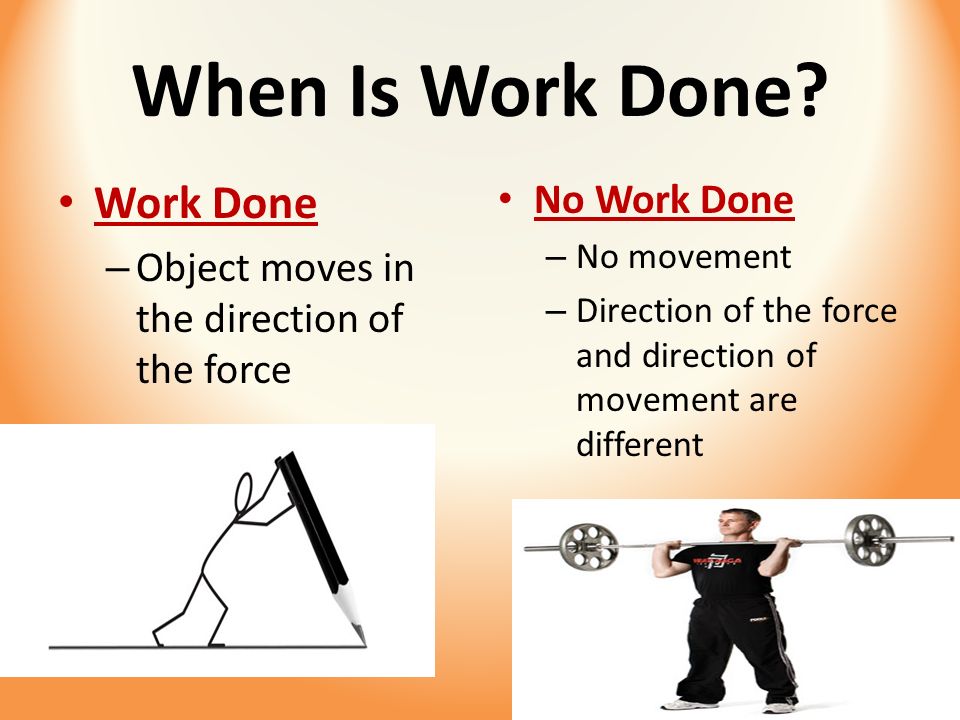In class we are learning about work; why does the force and motion have to go in the same direction?

2 Answers
I am afraid your text book (or wherever you have taken the image above from) is not quite correct.
Explanation:
A force does no work in two cases
- the point of action of the force does not move, or
- the point moves in a direction perpendicular to that of the force.
If the point of action moves in a direction which makes an angle with the force, then the work is given by the product of the force by the component of the displacement in the direction of the force.
As an example, consider the motion of a simple pendulum. Two forces act on the pendulum bob
- the tension in the string
- gravity
Of these, tension does no work, because the displacement of the bob is always perpendicular to the direction of the force.
As for gravity, it does do work on the pendulum as it moves down - but only the vertical component of the displacement - the height through which the bob moves down that counts. This work is what makes the bob speed up (this is something that may or may not have been covered in your class - but the net work done on a body is what raises its kinetic energy).
When the pendulum is on the upswing, its displacement is directed against the force. The work done in this case is negative, which makes the bob lose speed as it moves up.
Explanation:
The principle of conservation of energy is an important concept in Physics. Applying it to your question: If the force and motion go in the opposite direction, the object would be slowing down. Therefore its kinetic energy would decrease. And the source of the applied force would be pushed backwards. We then say that the object did work on the source of the applied force.
I hope this helps,
Steve


